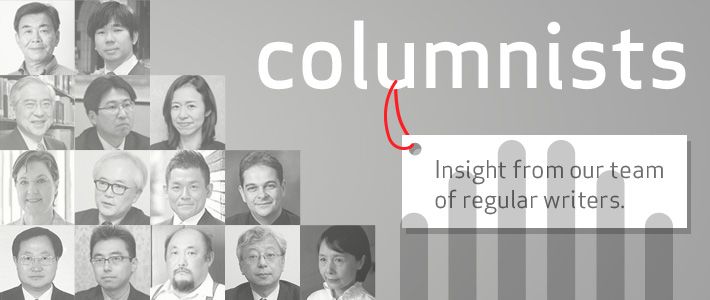
Abe's Three-Pronged Diplomatic Strategy
Politics- English
- 日本語
- 简体字
- 繁體字
- Français
- Español
- العربية
- Русский
Kishi Nobusuke, prime minister of Japan from February 1957 to July 1960 and grandfather of current Prime Minister Abe Shinzō, decided to travel to Southeast Asia in May 1957 on his first trip overseas after assuming office. Early on he had been inclined to make the United States his first destination, but as it turned out he made a round of visits to countries in Southeast Asia first. Why? Kishi had formulated a strategy for revising the Japan-US Security Treaty, which was considered to be inequitable. His ultimate objective was the revision of Japan’s constitution and the restoration of “independence.”
Abe’s Strategic Diplomacy: Starting with Asia
In taking that initial trip, which took him to Burma, India, Pakistan, Ceylon (now Sri Lanka), Thailand, and Taiwan, the Japanese prime minister sought to communicate the message both within and outside his own country that Japan could speak for Asia rather than as an isolated country, and intended to convey that impression to the United States, Japan’s wartime conqueror, as well.(*1) After returning to Japan, Kishi visited the United States the following month. In November 1957 he embarked on another tour of Southeast Asia, visiting South Vietnam, Cambodia, Laos, Singapore, Indonesia, and the Philippines, as well as Australia and New Zealand.
Prior to the House of Representatives election in December 2012, Abe’s inner circle was considering a tour of Southeast Asia to be followed by a trip to the United States, but a counterproposal to visit the United States first ultimately prevailed, and for a time the plan was for a US visit in January 2013.
This did not accord with the political calendar of newly reelected US President Barack Obama, however, so the planned January visit never took place. If it had, Deputy Prime Minister and Minister of Finance Asō Tarō and Minister for Foreign Affairs Kishida Fumio would have handled the diplomatic chores in Asia. As it turned out, however, the previous proposal for Abe to tour Southeast Asia was resurrected. As a result, now that Asia had become the starting point, Abe’s strategic diplomatic initiative assumed greater depth.
In January the prime minister travelled to Vietnam, Thailand, and Indonesia. One month later he visited Washington. In December, leaders from the Association of Southeast Asian Nations member states will gather in Tokyo for a Japan-ASEAN summit meeting.
Taking Part in the Trans-Pacific Partnership Negotiations
The first summit meeting between Prime Minister Abe and President Obama took place at the White House on February 22 (Eastern Standard Time). After the meeting Abe proclaimed that “the trust and the bond in our alliance is back.” The two countries had endured a nightmarish interlude that began when the Abe’s Liberal Democratic Party lost control of the government to the Democratic Party of Japan in September 2009, but the meeting between Abe and Obama reaffirmed the foundations of the Japan-US alliance.
The two leaders also issued a joint statement concerning Japan’s participation in negotiations over prospective economic agreement known as the Trans-Pacific Partnership. The statement said, in part: “It is not required to make a prior commitment to unilaterally eliminate all tariffs upon joining the TPP negotiations.” This amounted to a de facto announcement of Japan’s intention to take part in the negotiations.
The TPP has two distinct facets. On the one hand, it is a purely economic scheme; on the other, it’s a strategic arrangement affecting security and diplomacy. US participation in the TPP, which is intertwined with efforts to revive the US economy, is intended to facilitate American activities in Asia, which it views as the center of global economic growth, and is also closely connected to the US security initiative centered on a so-called rebalance to Asia. From the earliest days of the Obama administration, the “pivot toward Asia” has been a basic tenet of US foreign policy and the TPP is a major part of this. However, from the viewpoint of China, which would prefer to curb American influence in Asia as much as possible, the US-led TPP looks like an effort to encircle China.
Abe’s plan to participate in the TPP appears to be a strategic approach that has much in common with Kishi’s so-called Asianism.
China, the Unseen Actor in Abe’s Diplomacy
In summary, the summit diplomacy conducted by Abe in January and February was focused on securing three elements essential to his national strategy: Asia, the Japan-US alliance, and the TPP. These are likely to be the three vital constituents of Abe’s diplomatic and security-related strategy.
According to Yachi Shōtarō, a special advisor to Abe’s cabinet, there’s no foreseeable scenario for the restoration of good relations with China at present. In the meantime, Japan will need to focus its diplomatic efforts on improving its command of the aforesaid three elements. This is likely to mean the Abe administration will aggressively pursue diplomatic overtures toward other countries while keeping one eye fixed on China. Abe’s scheduled visit to Russia at the end of April may exemplify this approach. He will be seeking closer ties with Russia, which shares the world’s second longest national border with China—the superpower cast as the unseen actor in Abe’s strategic diplomacy.
(*1) ^ Kishi Nobusuke, Yatsugi Kazuo, and Itō Takashi, Kishi Nobusuke no kaisō (The Memoirs of Kishi Nobusuke) (Tokyo: Bungei Shunjū, 1981).
Abe Shinzō TPP ASEAN Japan-China relations Obama Kishi Nobusuke Japan-U.S. relations amending the constitution diplomacy in Asia